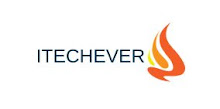With a few tips up your sleeve, you can increase productivity. And productivity and technology are interrelated. They are the driving force behind global competition and economic performance. Check out our list of ten tech tips to help your business remain profitable, relevant, and technologically advanced.
Whenever you’re in Wi-Fi range, switch over from your cellular network.
Keep a cap on streaming, which is the biggest data hog on your mobile device. One hour of streaming HD video can use 2GB of data.
Disable push content, which is data that is “pushed” to your phone without user interaction, like emails and Facebook notifications.
Track usage with a data monitor (both iPhones and Androids have one built in).
Tip #1: Generate strong, easy-to-remember passwords.
At this point, everyone knows not to use “1234″ as a password. We also know that the strongest passwords are more than eight characters long, include upper- and lowercase letters, numbers, and symbols, and don’t include any obvious information (your name) or even full words. The trick to a memorable but complex password is acronyms: Pick a phrase, such as “I’ve eaten Green Eggs and Ham since December 1969,” and squash it together, maintaining the first letters and all punctuation: “I’eGEaHsD1969″. You can also substitute numbers, symbols, and misspellings: “My son’s birthday is March 9″ becomes “Mi$sun’sbdayiz0309″. And be sure to change your passwords every six months, choosing a completely new acronym every time. Remember: Length is more important than complexity. Longer passwords, even if they’re simpler, are harder to crack.Tip #2: Keep your passwords safe.
Once you’ve come up with your fancy, easy-to-remember passwords, keep them safe. For heaven’s sake, don’t write them all on a piece of paper that you keep in your wallet! Use a service like LastPass or Dashlane to manage your many different logins and passwords.Tip #3: Quickly and easily speed up your computer.
Unlike a fine wine, your computer does not get better with age. It requires continuous upkeep to slow the inevitable decrease in processing speed, so keep your computer happy with monthly maintenance tasks: delete unnecessary programs; unload unnecessary files, like cookies; defragment the hard drive; perform a registry scan to identify damaged or corrupted files; and keep track of how much RAM space you have, ensuring you don’t run more programs than the system can handle.Tip #4: Reduce mobile data usage.
If you’re on a limited data plan, what are you thinking? Get on an unlimited plan. If the unlimited plan is prohibitively expensive, or if your carrier doesn’t offer unlimited data in your area and you don’t feel like moving to a metropolis, here are a few tricks to make sure you don’t go over your data limit:Whenever you’re in Wi-Fi range, switch over from your cellular network.
Keep a cap on streaming, which is the biggest data hog on your mobile device. One hour of streaming HD video can use 2GB of data.
Disable push content, which is data that is “pushed” to your phone without user interaction, like emails and Facebook notifications.
Track usage with a data monitor (both iPhones and Androids have one built in).








0 comments: